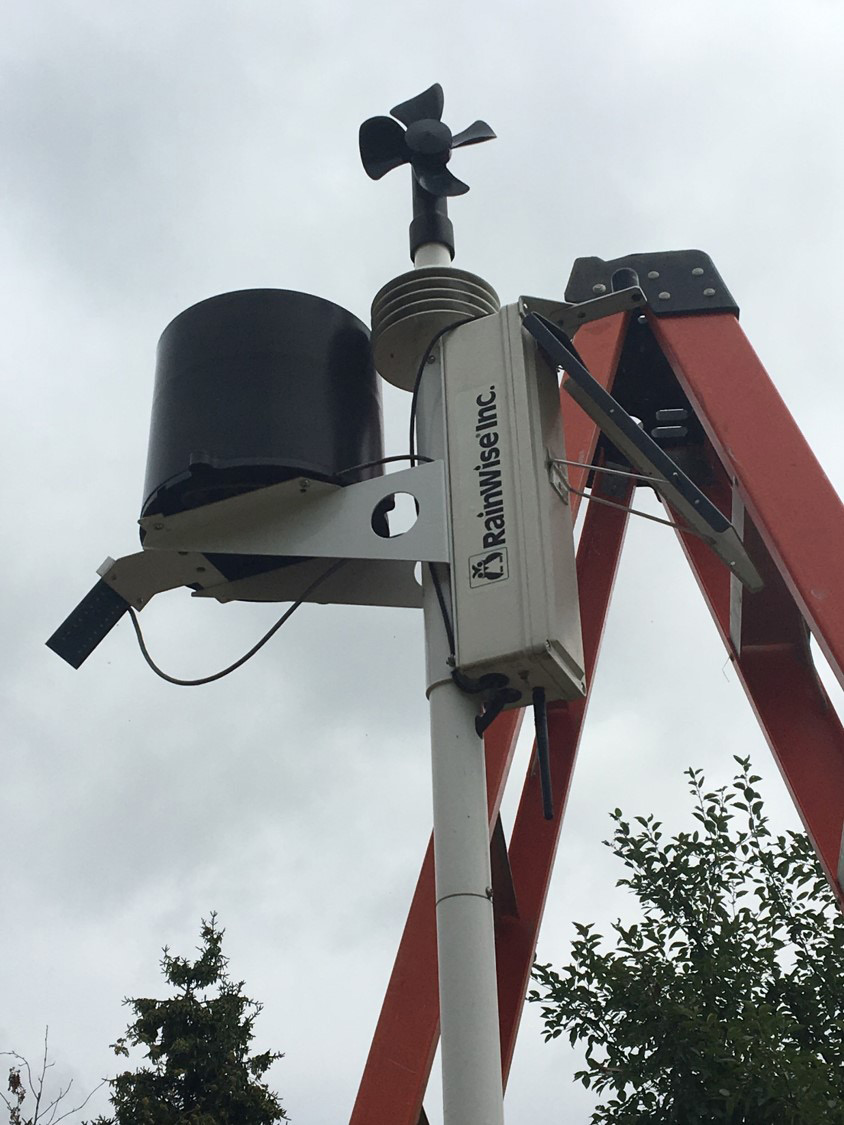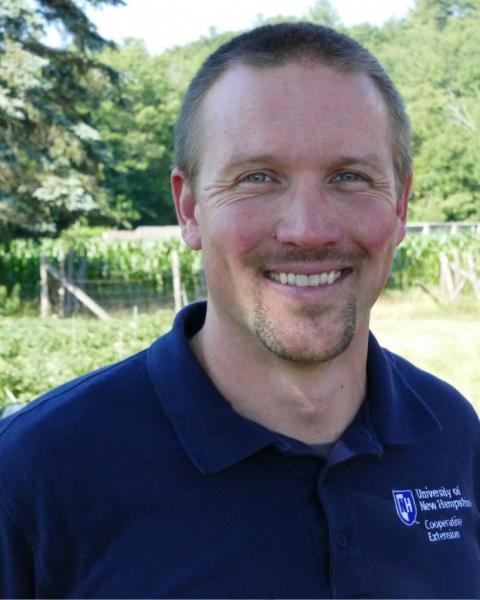A Tool for Smart Irrigation Management Decisions
Understanding the effects of rainfall and irrigation events on soil moisture provides critical insight for growers about the present growing environment for their crops. While experienced growers have learned over seasons of observations how their soils and water interact, utilizing a soil moisture measuring device of some sort enables them to put a number on their observations and more accurately track trends over time.
In 2018, UNH Extension began partnering with eight farms in Merrimack and Belknap counties to install soil moisture sensors in a variety of crops including a high-density apple planting, highbush blueberries, field-grown mixed greens, high tunnel tomatoes, field-grown peppers, and Christmas tree seedlings.
Monitoring soil moisture levels on these same farms continued during the 2019 production season, and growers reported that the information they gained as a result of monitoring was very beneficial. Some growers plan to purchase their own set of sensors and accompanying reader once our project concludes.
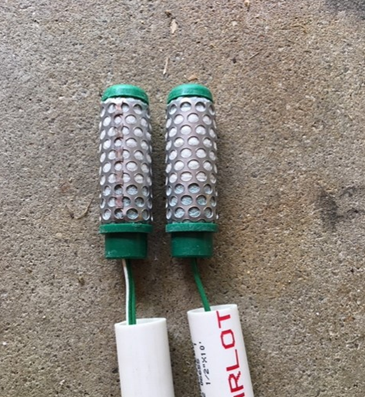
The sensors have allowed growers to better understand the frequency and duration of irrigation events needed, for their soil moisture trends, to maintain adequate moisture based on the crops being grown.
Grower Feedback
The information that has been gained from a grower’s perspective throughout this project has been quite diverse. There were instances where irrigation cycles were occurring too often and for far longer periods than needed to achieve field capacity of the soil. There were also instances where the use of sensors revealed malfunctioning irrigation system components by reporting unusually dry soil in areas that should have received ample irrigation.
The sensors have allowed growers to more accurately determine the frequency and duration of irrigation events needed, based on soil moisture trends, and maintain adequate moisture for the crops being grown. On many occasions, information from the sensors resulted in growers waiting an extra day or two to irrigate, avoiding unnecessary irrigation. The goal of this project is to provide growers with a useful tool and information resulting in a higher level of water use efficiency.
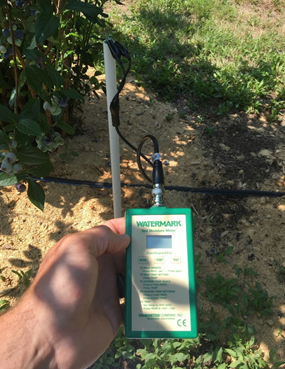
Sensor Types
The sensors used fall into the category of GMS (Granular Matrix Sensors). This category of sensors provides a reading based on the electrical resistance between two electrodes embedded in the granular matrix within the sensor. The more soil moisture available in the soil, the lower the resistance and the corresponding number on the reader. This resistance reading is reported in kilopascals (kPa) or centibars.Both of these readings are equal as a resistance measurement. The specific sensors we are using in our fieldwork are WATERMARK model 200SS.
As an example, a reading of zero would tell us that we have a fully saturated soil, while a reading of fifteen would be somewhat drier. It helps to think about these numbers in the sense of how hard the plant has to work to pull water from the soil.
Another traditional instrument used to measure soil water tension, the tensiometer, is designed to simulate a plant root and provides the same units of measurement as the WATERMARK sensors. The WATERMARK sensors have been calibrated to provide readings based on the format of soil water tension, defined as the force necessary for plant roots to extract water from the soil. Therefore, the readings from both the tensiometer and WATERMARK sensors are easily comparable.
Think for a moment about the implications of how this data could be used by growers to help minimize plant stress or disease caused by excess moisture, or how important adequate moisture is for efficient nutrient uptake by the plants. You can begin to see how the readings provided by these sensors can be utilized to fine tune irrigation management strategies and to better manage the growing environment for specific crops.
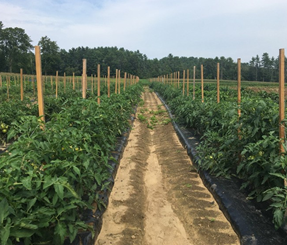
Installation
Proper installation of the WATERMARK sensors can be accomplished in several ways. Here in New Hampshire, we’ve been closely following the manufacturer’s instructions. Simplified, the standard sensors come with a two-wire lead measuring five feet long. This lead is threaded up through a section of PVC pipe of the desired length depending on your intended sensor depth in the field, glued in place with PVC glue, then capped with another section of larger diameter PVC with a cap and slid over the top to keep moisture out of the tube.
Before installing the sensor in the field, there is a recommended wetting and drying process that needs to be followed to ensure the sensors quickly responds to changing moisture conditions. Good soil contact with the sensor is essential to ensure accurate readings.
Follow the manufacturer’s instructions to ensure proper installation. Sensors can quickly and easily be moved from one location to another to better understand the dynamics of soil moisture in relation to soil types, irrigation cycles, topographical changes, etc., so long as the installation instructions are followed with each move.
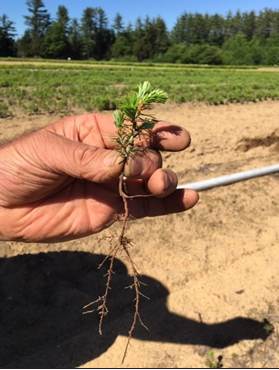
Interpreting the Readings
To take readings using these sensors, growers need access to a digital data reader which simply connects with clips to the end of each wire lead. The cost of these readers was $210 at the time this publication was written. Each sensor costs $36, and a pair of two is recommended for each location. Having two sensors allows growers to better understand the effects of irrigation at varying depths within a planting or block. Sensor depth can be adjusted depending on the rooting depth of the crop.
Established recommendations for soil moisture in specific crops and soil types are available. These recommendations provide growers with additional information on which to base their irrigation decisions. In most soils, other than heavy clay, the decision to irrigate would generally happen with sensor readings in the range of 20 to 40 kPa. Differences in soil type should be considered when determining the appropriate range for irrigation.
This is because different soil types have varying levels of plant-available water at various soil moisture readings. To clarify, a soil moisture tension reading of 40 kPa in a sandy loam would mean that approximately 50 percent of the water in the soil is available to the plant. Comparatively, a loamy sand soil would have only 35 percent plant-available water at the same 40 kPa reading (see chart).
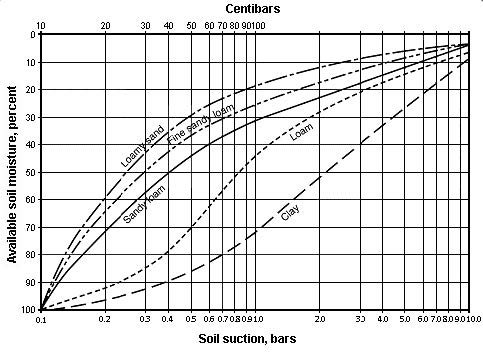
Note: 1kpa = 1 centibar; 100 centibars = 1 bar
This reinforces the importance of knowing the soil type, along with monitoring soil moisture and visually observing crops and soil to make an informed irrigation decision. Additionally, the method of irrigation should also be considered.
For example, it is recommended to begin overhead irrigation when the available soil moisture is no less that 50 percent, while drip irrigation, taking comparatively longer to distribute substantial volumes of water, could be started before the plant-available water drops below 80 percent. Using the sandy loam example from above, this would mean that a reading of 17 kPa would trigger a drip irrigation event.

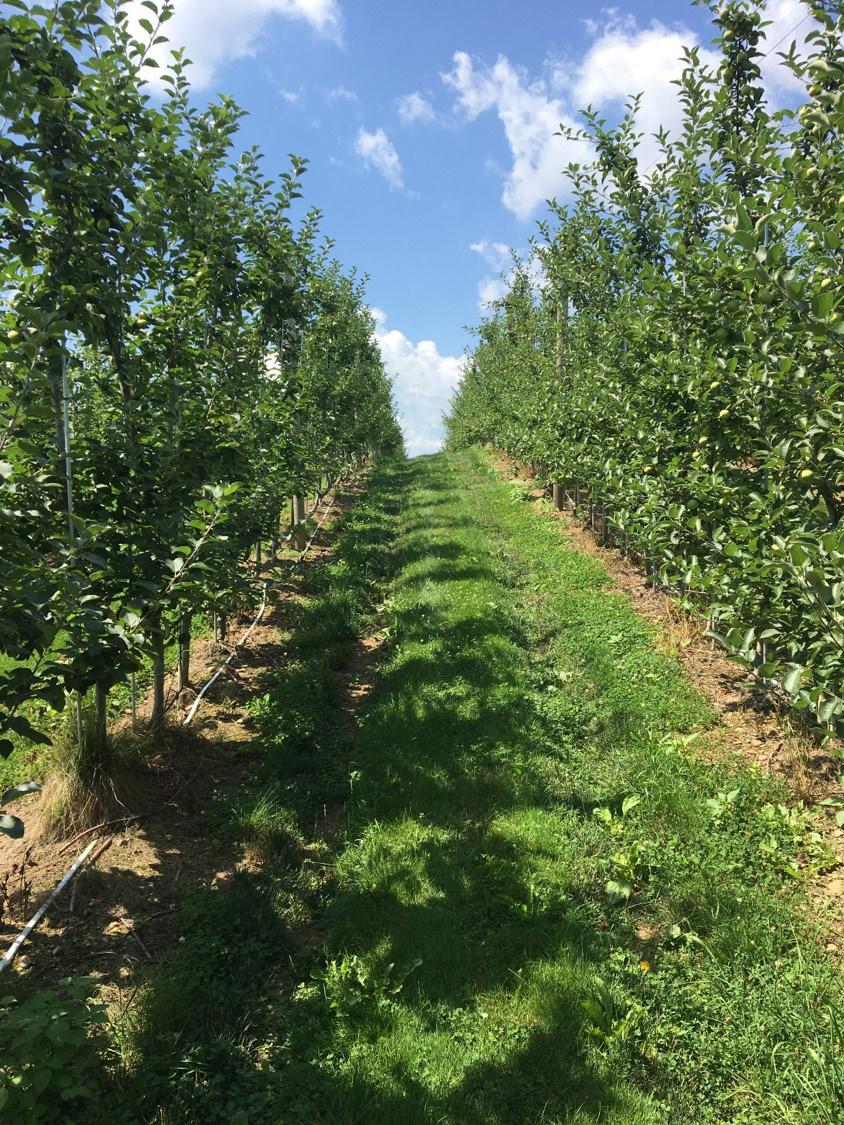
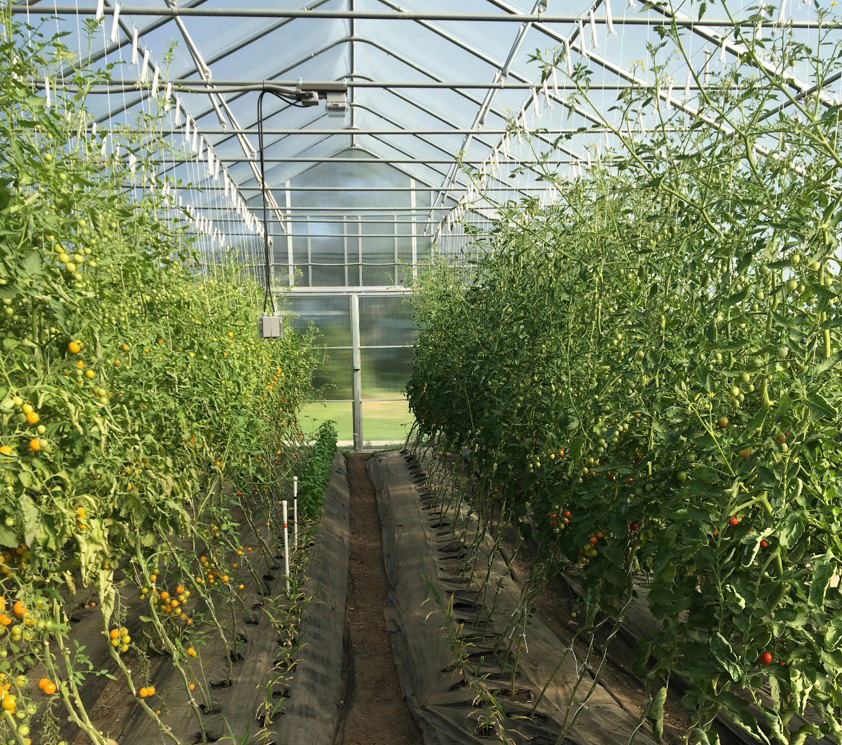
Acknowlegements
Author:Jeremy DeLisle, UNH Cooperative Extension Food & Agriculture Field Specialist
Originally Published: September 2019
USDA Northeast Climate Hub Funded Work
A special funding opportunity to support soil moisture monitoring work in New Hampshire became available in the spring of 2019. The USDA Northeast Climate Hub agreed to fund a project to install soil moisture sensors on existing weather stations maintained by UNH Cooperative Extension in partnership with farms across the state. These weather stations collect and feed data into the Network for Environment and Weather Applications (NEWA) newa.cornell.edu. To access station data, visit newa.cornell.edu and click on the station pages tab to find New Hampshire. There you can select the station nearest you for local information. The five stations currently collecting soil moisture data
in New Hampshire are Boscawen, New London, Goffstown, Durham and North Haverhill. The addition of soil moisture sensors allows for farmers to access soil moisture data from farms in their region. These sensors are placed near existing weather stations in a variety of crops, and the information collected will allow growers to track soil moisture and become familiar with how to interpret the data to make irrigation decisions. Ultimately, there is no substitute to on-farm monitoring for the most accurate assessment of the current soil moisture situation on any individual farm. Use the data captured to better understand how to interpret soil moisture readings, but plan to start using moisture sensor technology yourself for best results.
Learn more about the USDA Northeast Climate Hub
